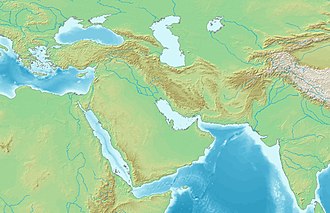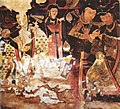Tokharistan | |
|---|---|
| Capital | Balkh |
| Historical era | Early Middle Ages |
| Today part of | Afghanistan, Uzbekistan, Tajikistan |

Tokharistan (formed from "Tokhara" and the suffix -stan meaning "place of" in Persian) is a historical name used by Islamic sources in the early Middle Ages to refer to the area which was known as Bactria in Ancient Greek sources. [4]
Contents
- Names
- Ethnicities
- "Tocharians" in the Tarim Basin
- Chinese sources
- Geography
- Art and culture
- 5th–6th century CE
- 7th century CE
- Samanids and Ghaznavids, 10th–11th century
- References
By the 6th century CE, Tokharistan came under rule of the First Turkic Khaganate, and in the 7th and 8th centuries, it was incorporated into the Tang dynasty, administered by the Protectorate General to Pacify the West. [5] Today, Tokharistan is fragmented between Afghanistan, Uzbekistan and Tajikistan.


















